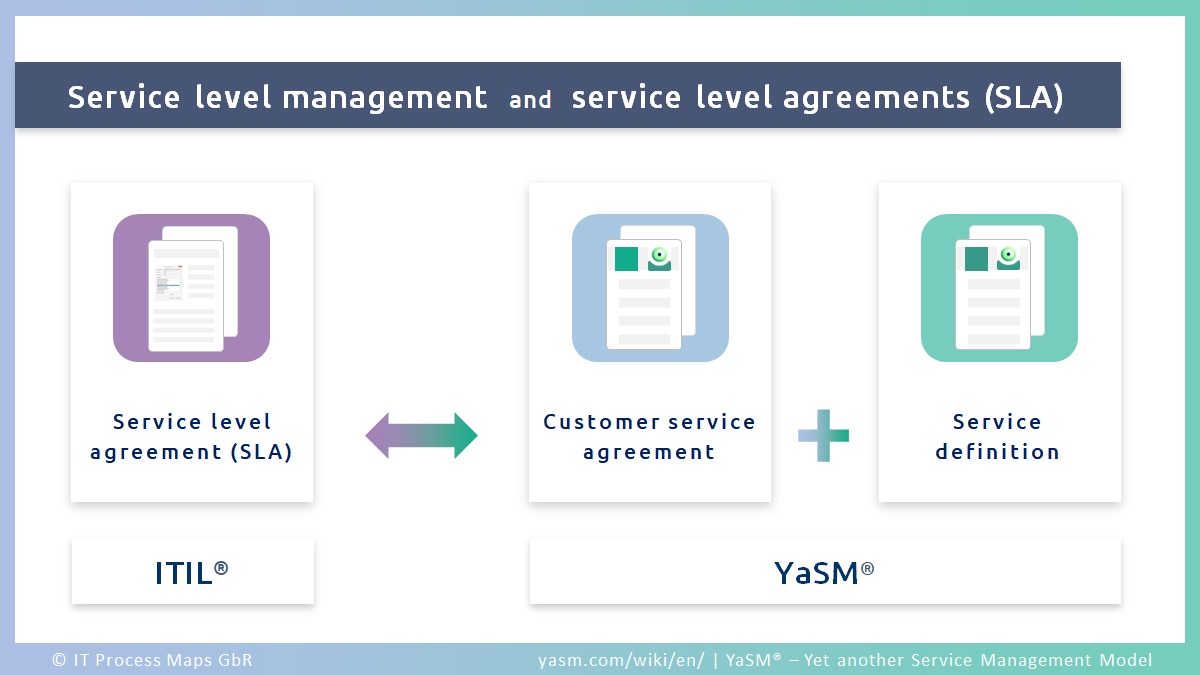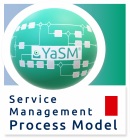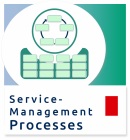Service Level Management
Service level management (SLM) as defined in ITIL 4 aims to "set clear business-based targets for service levels, and to ensure that delivery of services is properly assessed, monitored, and managed against these targets" [1]. SLM is essentially about
- identifying target service levels, such as required service availability, capacity and performance
- determining how the service level targets can be met in an economical way
- monitoring service levels and taking corrective action if needed.
To this end, ITIL® 4 includes the practice of service level management, while ITIL V3 defined service level management as a service lifecycle process.
In other service management frameworks and standards we also find service level management as a key topic. For example, SIAM refers to SLM as one of the processes within a SIAM ecosystem, and ISO 20000 specifies requirements for the management of service levels.
So it is commonly accepted that the management of service levels is critical for any service provider, but still many organizations find it difficult to implement SLM in practice. The problem may be the way it is presented:
Service level management is usually described as a distinct process, practice or capability, using its own set of documents and reports. It has numerous interfaces with other processes because it needs to spring into action whenever service level issues need to be dealt with. This kind of complex interfacing makes it hard to understand how all the processes are supposed to work together, which in turn makes it difficult to implement a working set of processes in practice.
SLM acitivities in YaSM
To get around these problems in YaSM, we decided that service level management does not need to be a service management process of its own. Instead, YaSM takes the view that service levels are an aspect to be considered at every stage of the service lifecycle - for instance when defining services, during service operation, and when continuously improving services.
There are thus, for instance, activities in the service design processes to identify and define target service levels. Service levels are continually monitored as part of service operation, and if any service level targets are not met, corrective action will be taken.
As a result, it is very clear in YaSM how service levels can be managed by embedding appropriate activities in the service lifecycle processes. Implementing a service level management capability in practice is thus quite straightforward.
Service level agreements (SLA)
A key element of service level management are agreements with customers that identify the services required and the expected service levels. These agreements are in fact the service contracts between the service provider and its customers.
ITIL® and other service management frameworks refer to these documents as "service level agreements (SLA)", "service requirements", "service characteristics", etc.
In YaSM we use the term "customer service agreement". Customer service agreements cover all aspects of a service that need to be agreed upon between the customer and the service provider.
In addition, YaSM introduces "service definitions". These are the documents where the properties of a service are defined in detail (see fig. 1).
Defining the service properties in a separate document allows agreements to be kept at a manageable size and avoid duplication, espacially when several customers use the same services:
- The customer service agreements will then cover all issues relevant to particular customers,
- and the service definitions (see also service definition (document template / checklist) can be included as attachments.
Related pages
- YaSM service management processes
- Comparison: ITIL 4 practices and YaSM processes
- YaSM and ISO 20000
References
[a] IT Process Wiki - ITIL Service Level Management. -- S. Kempter: IT Process Wiki, "ITIL Service Level Management. - IT Process Maps; Lindau (Bodensee), Germany.
[1] AXELOS: ITIL® Foundation, ITIL 4 Edition. - The Stationery Office; Norwich, UK, 2019.
By: Stefan Kempter ![]() , IT Process Maps.
, IT Process Maps.
SLM acitivities in YaSM › Service level agreements (SLA)






